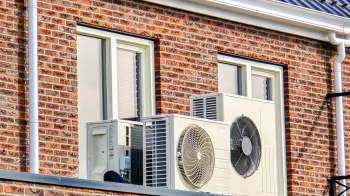In a tragic milestone for rising global temperatures, the National Weather Service has issued a heat advisory for Alaska, the first such alert in the state's history, Grist reported.
What's happening?
Facing 22 hours of summer daylight and temperatures forecast to reach 90 degrees Fahrenheit in some areas, Ciara Santiago, a meteorologist with the National Weather Service in Fairbanks, Alaska, issued the historic advisory.
"People in [the] Lower 48 might think that's nothing, but here those temps could feel like 110," Santiago said, per Grist.
With June temperatures normally in the low 70s, the heat posed a challenge for residents more accustomed to dealing with brutal winters than hot summers. Most homes were designed to trap rather than release heat, and few buildings have air conditioning, Grist reported.
Due to a phenomenon known as Arctic amplification, areas near the Earth's poles are warming at a much faster rate than the rest of the planet. With one-third of the state within the Arctic Circle, Alaska has experienced these effects firsthand, warming twice as fast as the lower 48 states, according to Harvard University's Belfer Center for Science and International Affairs.
These rising temperatures have impacted more than just the summer months. In December 2022, the northernmost U.S. city, Utqiavgik, Alaska, experienced a record wintertime high of 40 degrees Fahrenheit, per the Belfer Center.
Stay hydrated and refreshed this holiday season — without any sugar or harmful additives Nuun’s zero-sugar hydration tablets are a perfect, guilt-free way to enhance your water throughout the day. You’ll get five essential electrolytes for everyday hydration — with zero grams of sugar. Plus, Nuun tablets are certified vegan and gluten-free, and they’re the perfect size to keep in your car, purse, or anywhere you'll want a healthy, restorative drink. Learn more → |
Although heat waves and other extreme weather events have always existed, experts have connected the release of heat-trapping pollution to rising global temperatures and an increase in the number and severity of extreme weather events.
Why are rising Arctic temperatures important?
Heat waves in regions unaccustomed to hot temperatures can have devastating consequences. In the summer of 2022, more than 61,000 heat-related excess deaths occurred in Europe alone, and worldwide, nearly half a million people die from heat annually, according to the World Health Organization.
In Alaska, rising temperatures have devastated the economy and made supply routes less reliable. Locals have long relied on ice roads literally made of snow to transport vital supplies across the vast distances of the Arctic North, according to a separate report by Grist.
As temperatures have increased, even in winter, these roads have become increasingly treacherous for truckers and less reliable for those who depend on the essential goods they deliver.
|
Do you think your city has good air quality? Click your choice to see results and speak your mind. |
But the impacts of rising Arctic temperatures extend well beyond Alaska. Since 2000, the state has lost roughly 1500 gigatons of glacier ice, according to Harvard's Belfer Center. A gigaton is equal to 1 billion tons, or 2 trillion pounds.
Because water from melting land ice, like Alaska's glaciers, ends up in the ocean, it contributes significantly to global sea-level rise.
What's being done about rising Arctic temperatures?
In order to slow rising Arctic temperatures, we must drastically reduce the amount of planet-warming pollution entering the Earth's atmosphere. While this can seem like an insurmountable challenge, there are things that all of us can do to make a difference.
For example, growing your own food at home, rewilding your yard, or driving an electric vehicle all are great ways to reduce pollution while also saving money on things like water and gas.
Similarly, one of the biggest moves anyone can make is switching to solar, as it can greatly reduce your reliance on electricity generated using dirty-burning fuels like coal and natural gas — while also saving tons (maybe even gigatons, depending on the denominations) of money on your energy bills in the long run. If you're interested in learning more, EnergySage can help you find local solar contractors, saving you up to $10,000 in the process.
Join our free newsletter for good news and useful tips, and don't miss this cool list of easy ways to help yourself while helping the planet.















